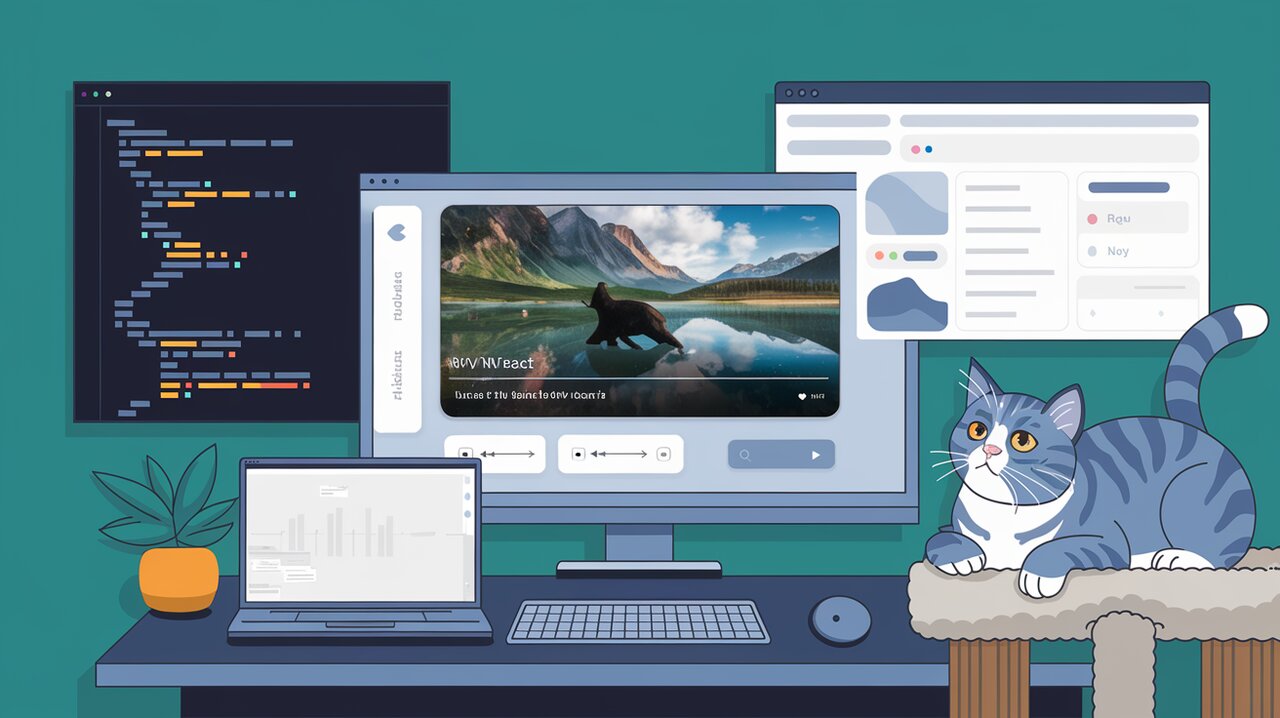
Plyr React: Elevate Your Media Experience with Seamless Integration
Unleashing the Power of Plyr React
In the ever-evolving landscape of web development, creating engaging and interactive media experiences has become crucial. Plyr React emerges as a powerful solution, bringing the capabilities of the popular Plyr media player to the React ecosystem. This library offers a responsive and customizable media player that supports video, audio, YouTube, and Vimeo content, making it an invaluable tool for developers seeking to enhance their React applications with rich media functionality.
Key Features
Plyr React boasts an impressive array of features that set it apart:
- Multi-format Support: Seamlessly handle video, audio, YouTube, and Vimeo content.
- Responsive Design: Adapt to various screen sizes and devices.
- Customizable Interface: Tailor the player’s appearance to match your application’s design.
- Accessibility: Ensure an inclusive experience with built-in accessibility features.
- API Access: Gain full control over the player’s functionality through a comprehensive API.
Getting Started with Plyr React
Installation
To begin using Plyr React in your project, you can install it via npm or yarn:
# Using npm
npm install plyr-react
# Using yarn
yarn add plyr-react
Basic Usage
Once installed, you can start using Plyr React with minimal setup. Here’s a simple example:
import React from 'react';
import Plyr from 'plyr-react';
import 'plyr-react/plyr.css';
const MyPlyrComponent = () => {
const videoSrc = {
type: 'video',
sources: [
{
src: '/path/to/video.mp4',
type: 'video/mp4',
},
],
};
return <Plyr source={videoSrc} />;
};
export default MyPlyrComponent;
This code snippet creates a basic video player using Plyr React. The source prop is used to specify the media source, which in this case is a local video file.
Advanced Usage and Customization
Configuring Player Options
Plyr React allows extensive customization through its options prop. Here’s an example demonstrating some common configurations:
import React from 'react';
import Plyr from 'plyr-react';
import 'plyr-react/plyr.css';
const AdvancedPlyrComponent = () => {
const videoSrc = {
type: 'video',
sources: [
{
src: 'https://example.com/video.mp4',
type: 'video/mp4',
},
],
};
const plyrOptions = {
controls: ['play-large', 'play', 'progress', 'current-time', 'mute', 'volume', 'captions', 'settings', 'pip', 'airplay', 'fullscreen'],
settings: ['captions', 'quality', 'speed'],
autoplay: false,
muted: false,
hideControls: true,
tooltips: { controls: true, seek: true },
};
return <Plyr source={videoSrc} options={plyrOptions} />;
};
export default AdvancedPlyrComponent;
This configuration customizes the player controls, settings menu, and behavior, providing a tailored user experience.
Accessing the Plyr Instance
For more advanced use cases, you might need direct access to the Plyr instance. Plyr React makes this possible through refs:
import React, { useRef, useEffect } from 'react';
import Plyr from 'plyr-react';
import 'plyr-react/plyr.css';
const PlyrWithRef = () => {
const plyrRef = useRef<Plyr>(null);
useEffect(() => {
const player = plyrRef.current?.plyr;
if (player) {
// Access Plyr methods and properties
console.log('Current time:', player.currentTime);
player.on('timeupdate', () => {
console.log('Time updated:', player.currentTime);
});
}
}, []);
return <Plyr ref={plyrRef} source={{ type: 'video', sources: [{ src: '/path/to/video.mp4', type: 'video/mp4' }] }} />;
};
export default PlyrWithRef;
This approach allows you to interact with the Plyr instance directly, enabling advanced functionality and custom event handling.
Integrating with HLS Streams
Plyr React also supports HLS (HTTP Live Streaming) integration, which is particularly useful for adaptive bitrate streaming:
import React, { useRef } from 'react';
import Plyr, { usePlyr, useHls } from 'plyr-react';
import 'plyr-react/plyr.css';
const HlsPlayer = () => {
const ref = useRef<HTMLVideoElement>(null);
const hlsSource = 'https://example.com/playlist.m3u8';
const options = {};
return (
<video
ref={usePlyr(ref, {
...useHls(hlsSource, options),
source: { type: 'video', sources: [{ src: hlsSource, type: 'application/x-mpegURL' }] },
})}
className="plyr-react plyr"
/>
);
};
export default HlsPlayer;
This setup enables the player to handle HLS streams, providing a smooth streaming experience for viewers.
Conclusion
Plyr React stands out as a versatile and powerful media player solution for React applications. Its ease of use, extensive customization options, and support for various media types make it an excellent choice for developers looking to enhance their projects with rich media capabilities. By leveraging the features and flexibility of Plyr React, you can create engaging, accessible, and responsive media experiences that elevate your React applications to new heights.
